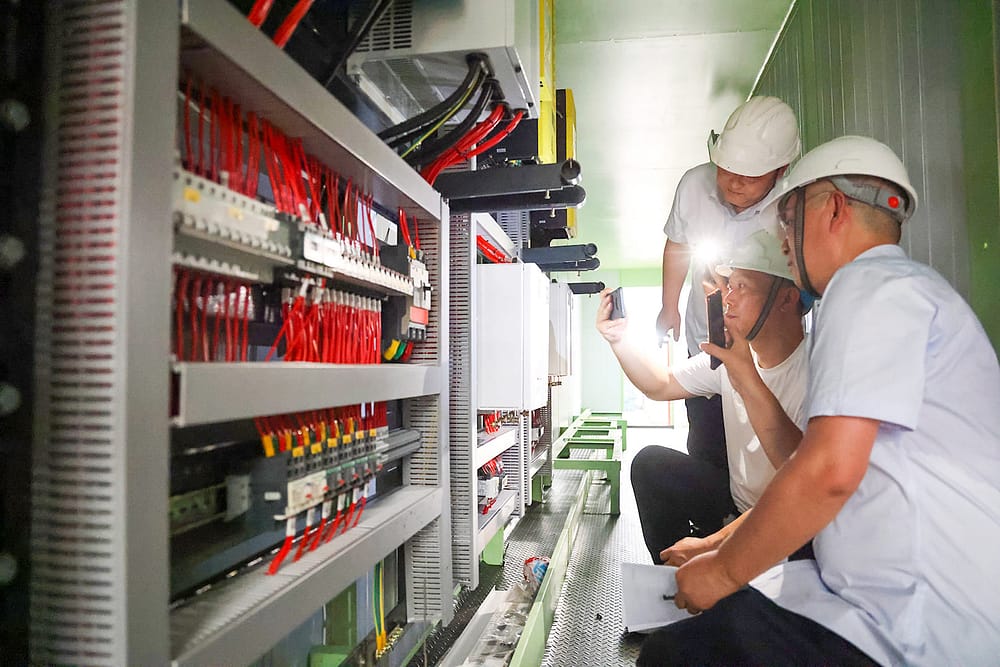Comprehensive electrical system troubleshooting expertise for complex applications.
Comprehensive electrical system troubleshooting expertise for complex applications.
Blog Article
Top Tips for Effective Electric System Troubleshooting
Repairing electrical systems requires a systematic method, based in a thorough understanding of electric concepts and safety and security protocols. The nuances of reliable repairing extend beyond mere technical knowledge; understanding just how to record findings and prioritize safety can significantly influence end results.
Understand the Basics
Understanding the basics of electrical systems is important for efficient troubleshooting, as a solid foundation permits specialists to diagnose and deal with problems much more efficiently. A comprehensive understanding of electric principles, such as voltage, current, resistance, and power, is crucial in identifying the source of troubles. Voltage is the electric possible distinction that drives existing with a circuit, while resistance opposes the circulation of present, impacting the total functionality of the system.
Knowledge with circuit components, including resistors, capacitors, diodes, and changes, is likewise vital. Each component plays a distinct role in circuit actions and can influence efficiency when malfunctioning. Furthermore, comprehending collection and parallel circuit arrangements is crucial, as these plans affect the circulation of voltage and existing within the system.
Additionally, expertise of safety methods is essential. Technicians must be aware of potential dangers, such as shock and short circuits, to apply risk-free troubleshooting practices. By understanding these foundational ideas, professionals improve their capability to carry out effective diagnostics and fixings, inevitably leading to boosted efficiency and reliability of electric systems. This foundational understanding is the keystone of effective repairing undertakings.
Gather Necessary Tools
Efficient troubleshooting of electric systems requires the right set of devices to diagnose and deal with problems properly. Important tools consist of a multimeter, which determines voltage, present, and resistance, allowing for precise assessments of electrical components.
Additionally, protected hand tools such as screwdrivers, pliers, and wire strippers are essential for securely controling electrical connections. It is additionally recommended to have a circuit tester handy to validate the presence of voltage in outlets and wires. For more complex systems, a thermal imaging cam can help identify overheating elements, indicating prospective failings.

Adhere To a Methodical Technique
Having actually collected the suitable tools, the next step in fixing electric systems is to adhere to a methodical approach. A systematic strategy makes sure that specialists can recognize faults efficiently and precisely, minimizing downtime and avoiding unnecessary repair work.
Begin by assessing the system's schematic diagrams and specifications. This entails checking each element methodically, beginning from the power resource and working towards the lots.
Utilize screening equipment, such as multimeters and oscilloscopes, to collect objective data concerning voltage, existing, and resistance at numerous factors within the system. This empirical proof will certainly direct your troubleshooting efforts and assist to verify or get rid of potential root causes of failure.
In addition, think about ecological variables that might influence the system's performance, such as temperature level changes or moisture ingress. An extensive examination of electrical wiring, connections, and components will make certain that all opportunities are accounted for.
File Your Searchings For
Thorough documentation is crucial in the fixing process of electrical systems. Accurate records boost the efficiency of recognizing repeating problems and assist in interaction among staff member. Each searching for should be thoroughly kept in mind, including signs and symptoms observed, examinations performed, and the results of those tests. electrical system troubleshooting. This practice not just aids in understanding the origin cause of the trouble but also works as a referral for future repairing initiatives.

In addition, preserving a log of parts changed or repairs performed is very linked here useful. This information sustains inventory administration and can aid analyze the longevity and dependability of details parts.
Eventually, the documents procedure ought to be detailed yet concise, making it possible for simple retrieval and testimonial - electrical system troubleshooting. By focusing on comprehensive documentation, technicians can create a beneficial data base that not only aids in current troubleshooting however additionally encourages future maintenance initiatives, consequently boosting general system reliability

Prioritize Security Measures
Acknowledging the integral risks connected with electric systems is essential for guaranteeing security during troubleshooting. Electric shock, burns, and equipment damage are just a few of the possible dangers that specialists deal with. Focusing on safety and security procedures is not only a legal responsibility but additionally a moral crucial that safeguards both the specialist and the surrounding atmosphere.
Prior to beginning any type of troubleshooting job, specialists More about the author should wear proper personal protective equipment (PPE), consisting of shielded gloves, shatterproof glass, and flame-resistant clothing. Making sure that the workplace is dry and devoid of clutter can substantially reduce the risk of accidents. It is essential to de-energize circuits before beginning any type of job, verifying that they are not live via the use of a multimeter or voltage tester.
Developing clear communication protocols with group participants is additionally crucial; this makes certain that everybody recognizes possible dangers and the standing of the electric system being dealt with. Lastly, having an emergency action strategy in area can show invaluable in case of an event. By prioritizing precaution, professionals can efficiently mitigate risks and foster a safer work environment.
Verdict
Effective electrical system troubleshooting counts on a detailed understanding page of basic concepts and a systematic approach. By collecting important tools, sticking to organized analysis strategies, and carefully documenting searchings for, the troubleshooting procedure comes to be a lot more effective and reliable. Prioritizing security steps guarantees the well-being of people involved and the integrity of the electric system. Carrying out these strategies will certainly improve the fixing experience, resulting in quicker resolutions and enhanced operational effectiveness in electric systems.
Report this page